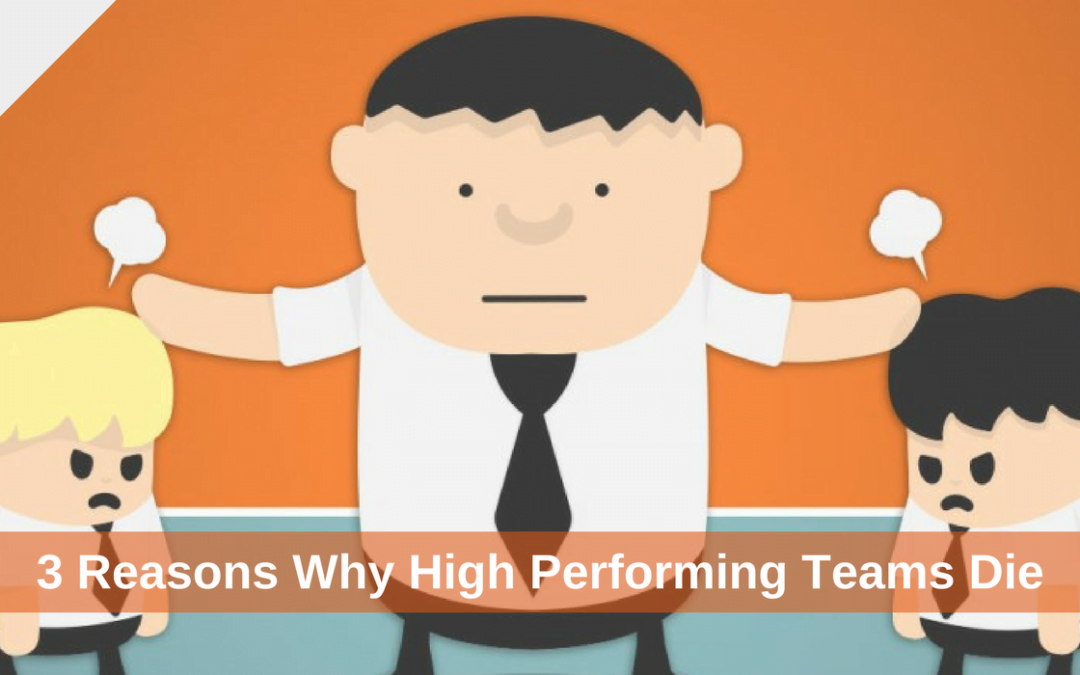It can be extremely frustrating to witness a formerly high performing team die a slow, miserable death. See some of the reasons why this happens so that you can avoid them.

Written by
Karan Rhodes
A rarely talked about fact is that leaders constantly face pressure of their heads being on the “chopping block”. They fear reprimand or firing if they do not consistently succeed leading their teams or organizations. “Black Monday” in the NFL is a perfect example of this fact.
Create and lead a high performing team, and the world celebrates you. Lead a dysfunctional team or kill a previously high performing team, and your name is dirt.
Ever took a moment to think why teams really exist?
Teams exist because there is a challenge or opportunity that’s too big for one person to do alone. And leaders exist to help teams effectively achieve the challenge or opportunity with the desired results.
Not rocket science, I know, but it raises a common threat which haunts many leaders – why do high performing teams sometime die?
Here are 3 reasons that I see most frequently:
- Passion was killed: Team members who are passionate about their work LOVE to win and HATE to lose. Passion drives action. High performing teams who lose trust in their leader or lose trust in the perceived value of their work, frequently find the team on on life support to stay alive.
- Communication was lacking: Every high performing team has a team culture and unwritten rules about how to behave. Open and honest communication is the ONLY way to build trust. Where there is no trust, there is no team. If a leader does not ensure team communications are frequent and relevant, the team ends up not moving in the same direction and beginning a slow demise.
- Chemistry was destroyed: Chemistry is about action, reaction and bonding. Fun times help build the foundation for team chemistry but deep bonds are built within high performing teams when the team survives together under adversity and pressure. However, if the leader lacks the capability to stabilize the stressed emotions of each team member, the conflicts which arise can tear the team apart.


I love to curate and share best practices and research out there, in addition to my own. MIT’s Human Dynamics laboratory, has done some great work on how to reduce the risk of inadvertently killing high performing teams.
Building, leading, and maintaining the effectiveness of a high performing team is a hard challenge for leaders in any industry.
 Becoming astute in Stakeholder Savvy leaders stay emotionally aware of any risks to team effectiveness. Stakeholder Savvy is 1 of the 7 competencies that will ultimately help you “lead at the top of your game.”
Becoming astute in Stakeholder Savvy leaders stay emotionally aware of any risks to team effectiveness. Stakeholder Savvy is 1 of the 7 competencies that will ultimately help you “lead at the top of your game.”
Want to build the Stakeholder Savvy leadership competency within your organization? Contact us to learn about our development experiences.




